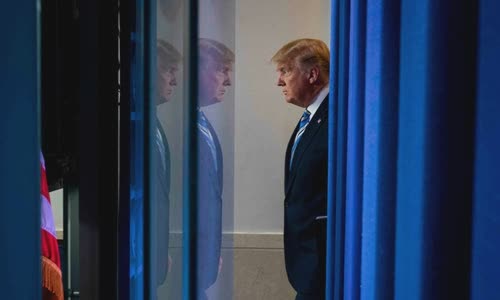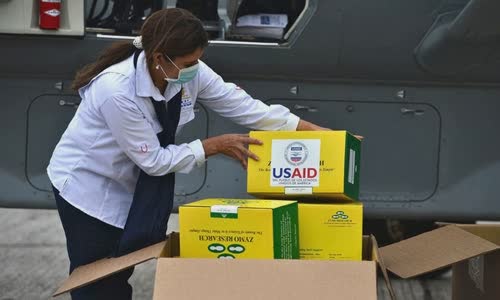The United States pledged nearly $ 1.6 billion in aid to help countries around the world fight Covid-19, but so far less than $ 400 million has been disbursed.
The administration of President Donald Trump has always praised the United States for leading the world in the fight against Covid-19.

President Donald Trump at the White House, Washington, in March Photo: NYTimes.
But as of last week, only $ 386 million, or nearly 25% of the total aid, was sent to countries in need, according to an unnamed government source.
Of that, only $ 11.5 million in international disaster aid has been sent to private aid groups, although the purpose of the aid is to help areas hit hard by the pandemic.
Many aid workers shared their anxiety and bewilderment as to why most of the humanitarian aid has yet to be disbursed.
"The people most affected by the pandemic receive very little humanitarian aid," 27 aid executives wrote in a letter to John Barsa, head of USAID, on June 4.
The majority of aid is provided through USAID.
Jhunjhunwala also said that USAID must conduct a rigorous evaluation before sending relief money to ensure they are properly spent.
Over the past several months, Secretary of State Mike Pompeo has repeatedly praised the United States for generously helping the rest of the world against Covid-19.
"The US State Department attaches great importance to human life in the fight with nCoV," he said in May. In a speech on June 4, Secretary of State Pompeo said, "we really mobilize all resources to fight
USAID and the State Department have pledged to send more than one billion dollars in anti-Covid-19 aid to more than 100 countries since April, but most of this has not been disbursed.
"It is like a pipe that already has water but it takes too much time to open the hose," said Bill O’Keefe, vice president of Catholic Relief Services, a US NGO that distributes humanitarian aid.
O’Keefe has received about US $ 10 million to help the West Bank, Italy and Haiti combat the epidemic.

The batch of nCoV test equipment was shipped to Honduras by USAID in April Photo: AFP.
"We are trying to remedy this situation. Our goal is to help countries to prevent as soon as possible. Because the fewer cases, the risk of outbreaks and the lower the number of deaths,"
The aid that the US Department of State and USAID provide is largely for the campaign to raise awareness about how to prevent viruses, provide clean water and sanitation services, as well as health services for refugees.
The delayed aid is said to be due to a debate between the Trump administration and the US congress about whether the money could be used to buy protective gear for anti-Covid-19 health workers abroad.
Since April, the White House has considered banning aid for this purpose, when US health workers also need protective equipment.
Mr. John Barsa, head of USAID, said that the decision would soon be made, but until then, new aid contracts must comply with the above regulation.
Nazanin Ash, a former senior official of USAID and the US Department of State, said during the Ebola outbreak in West Africa and Europe, humanitarian aid funds were usually sent to aid organizations in 30-45 days.
"But in a much more serious pandemic of Ebola, aid takes 3-4 months to reach those on the front lines against the epidemic," said Ash, now vice chair of the International Relief Committee.
Meanwhile, many government officials and aid groups are trying to predict how much more aid will be needed against Covid-19 over the coming months or years, especially in poor and unstable countries dependent on the United States.
Ms. Ash served as a senior employee of USAID under George W. Bush and later assistant assistant secretary of state in the Barack Obama administration.
"USAID's absence in the fight against Covid-19 is a major flaw," she said.



 Mahnoor Hunjra
Mahnoor Hunjra







